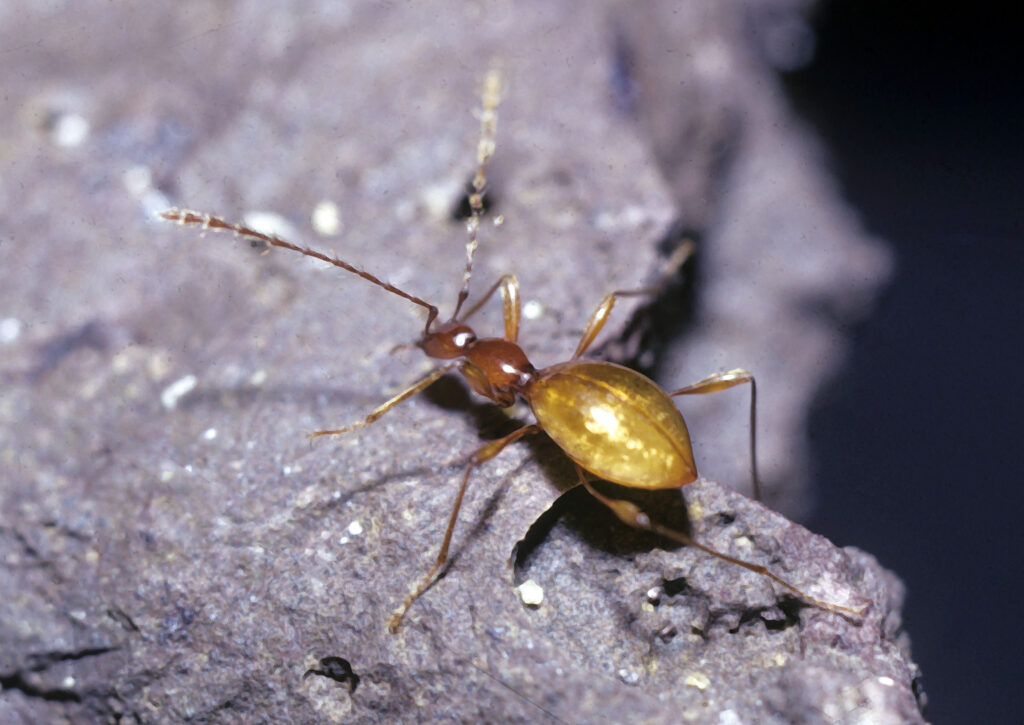Deep beneath the Earth’s surface, where sunlight has never touched and darkness reigns supreme, an extraordinary creature thrives in conditions that would challenge most life forms. This remarkable insect has evolved over millions of years to call the most inhospitable environments home, developing adaptations so profound that they seem almost alien to our surface world. The cave beetle, specifically species like Anophthalmus hirtus, represents one of nature’s most fascinating examples of evolutionary adaptation, having completely lost its eyes while gaining enhanced abilities that allow it to navigate and hunt in absolute darkness.
The World of Eternal Darkness
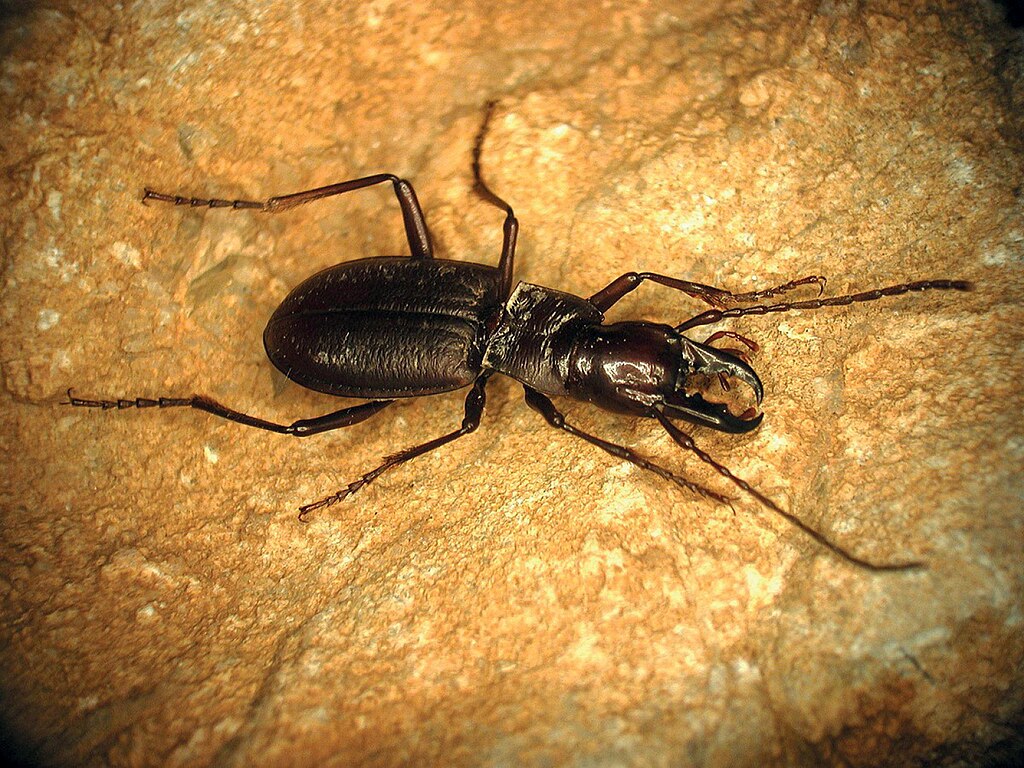
Imagine living in a world where the concept of light doesn’t exist, where every moment is spent in complete and utter blackness. This is the reality for countless cave-dwelling insects that have made their homes in the deepest recesses of limestone caves, lava tubes, and underground caverns around the globe. These environments, known as the “aphotic zone,” receive absolutely no natural light and maintain constant temperatures year-round. The conditions in these caves are so extreme that they’ve created their own unique ecosystems. Humidity levels remain consistently high, temperatures rarely fluctuate, and the absence of photosynthesis means that all energy must come from organic matter that filters down from the surface world. It’s in this alien landscape that some of the most remarkable evolutionary adaptations have taken place.
Meet the Eyeless Cave Beetle
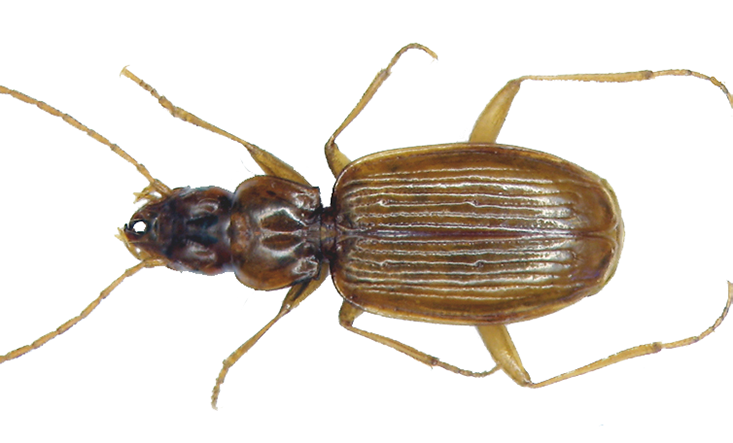
The cave beetle belongs to a group of insects that have undergone what scientists call “regressive evolution” – the loss of features that are no longer necessary for survival. These beetles, measuring typically between 3-8 millimeters in length, have completely lost their eyes over thousands of generations. Where eyes once were, you’ll find smooth, hardened areas of their exoskeleton, creating an almost otherworldly appearance. Their bodies are typically pale or completely colorless, lacking the pigmentation that surface insects use for protection against UV radiation. This ghostly appearance has earned them the nickname “ghost beetles” among cave explorers. Despite their small size, these creatures are perfectly adapted predators in their underground domain.
The Evolutionary Journey to Blindness
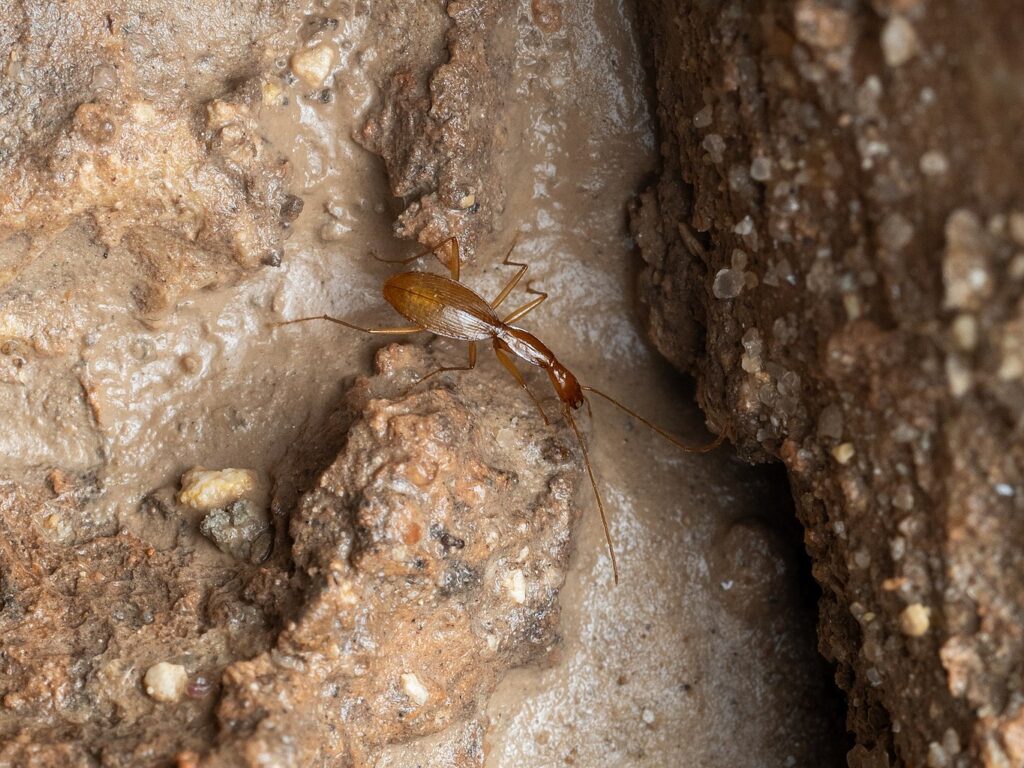
The loss of eyes in cave beetles didn’t happen overnight – it’s the result of millions of years of evolutionary pressure. When these insects first entered caves, they likely still possessed functional eyes, but over countless generations, the energy cost of maintaining complex visual organs became a disadvantage rather than an asset. In an environment where vision provides no benefit, natural selection favored individuals who could redirect that energy toward more useful adaptations. This process, known as “use it or lose it” evolution, demonstrates how organisms can become incredibly specialized for their environments. The genes responsible for eye development gradually became non-functional, but rather than being a loss, this represents a gain in evolutionary efficiency. These beetles have essentially traded their sight for enhanced abilities that serve them far better in their dark world.
Enhanced Sensory Superpowers
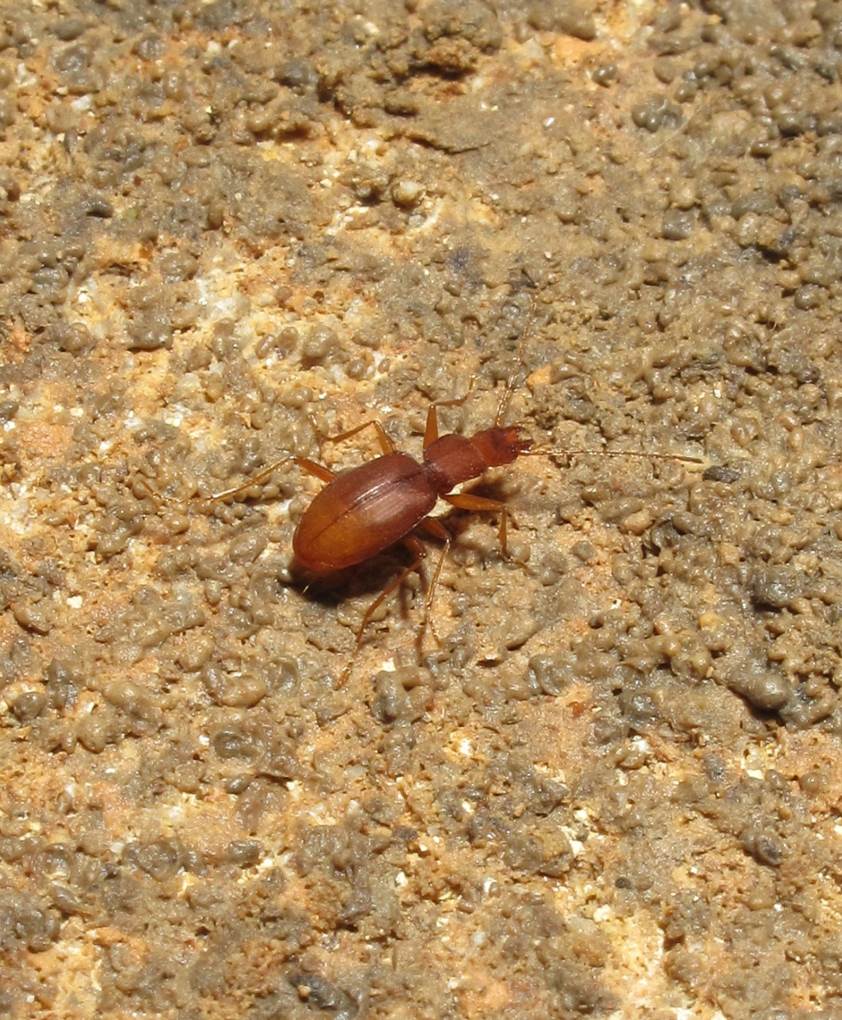
What cave beetles lack in vision, they more than make up for with extraordinary sensory abilities that would make any surface insect jealous. Their antennae have evolved to become incredibly sensitive chemical detectors, capable of picking up the faintest traces of prey or potential mates from remarkable distances. These antennae can detect chemical gradients so subtle that they can follow scent trails like bloodhounds in complete darkness. Their legs and body are covered with specialized sensory hairs called setae, which can detect the slightest vibrations and air currents. This creates a three-dimensional map of their environment based purely on touch and vibration. Some species have developed such sensitive mechanoreceptors that they can detect the movement of other insects from several body lengths away, making them formidable hunters in their dark domain.
The Art of Cave Navigation
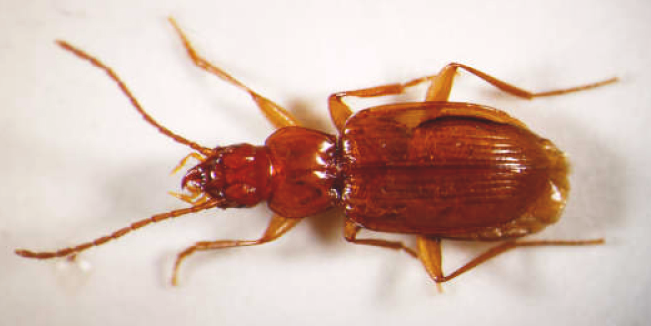
Navigating in complete darkness requires skills that most surface dwellers can’t even imagine. Cave beetles have developed an internal compass system that allows them to maintain their orientation even in the most complex cave systems. They use a combination of chemical landmarks, air current patterns, and substrate texture to create mental maps of their territory. These insects can travel surprisingly long distances within cave systems, sometimes covering areas equivalent to several football fields in their lifetime. They establish regular patrol routes and can return to specific locations with remarkable accuracy. Their navigation system is so precise that researchers have found individuals returning to the exact same spot day after day, despite the complete absence of visual landmarks.
Feeding in the Dark
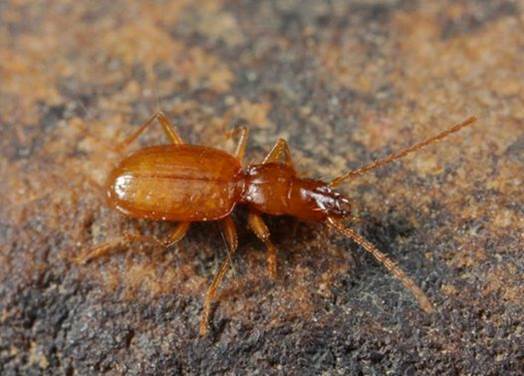
The cave beetle’s diet consists primarily of other cave-dwelling invertebrates, organic debris that washes into caves, and sometimes even bat guano. Their hunting strategy relies heavily on patience and stealth, as they position themselves along known travel routes of prey species. When a potential meal comes within range, they strike with lightning speed, using their powerful mandibles to subdue their quarry. Some cave beetles have developed the ability to climb cave walls and ceilings, allowing them to access prey that other ground-dwelling predators cannot reach. This vertical hunting capability gives them access to unique food sources, including small spiders, springtails, and other insects that might fall from higher cave levels. Their digestive systems have also adapted to process a wide variety of organic materials, making them incredibly efficient at extracting nutrients from limited food sources.
Reproduction in Absolute Darkness
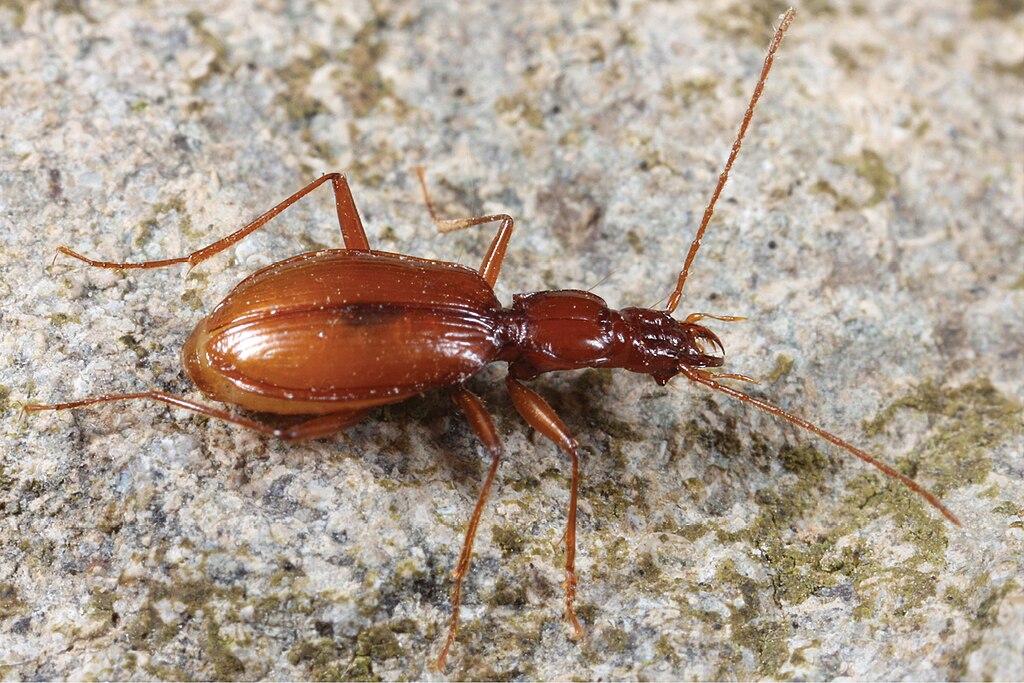
Finding a mate in complete darkness presents unique challenges that these beetles have solved through sophisticated chemical communication. Males release complex pheromone signals that can travel through cave air currents for considerable distances. Females respond with their own chemical signatures, creating an intricate courtship dance that relies entirely on scent and touch. The mating process itself is often prolonged, with pairs remaining coupled for extended periods to ensure successful fertilization. Female cave beetles are extremely selective about where they lay their eggs, choosing locations with optimal humidity levels and proximity to food sources. The larvae that emerge are just as well-adapted to cave life as their parents, hatching without eyes and immediately beginning their own journey of navigating the dark world.
Temperature Masters
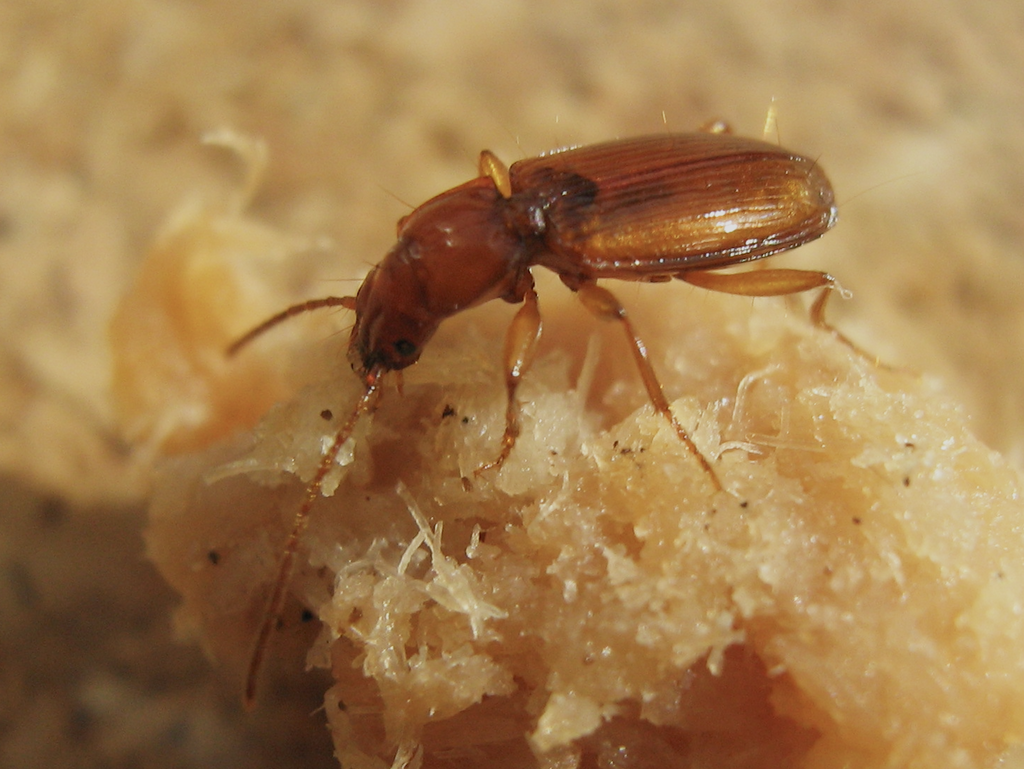
One of the most remarkable adaptations of cave beetles is their ability to thrive in the constant, cool temperatures of deep caves. While surface insects must deal with dramatic temperature fluctuations, cave beetles have evolved to be perfectly adapted to stable, cool conditions that rarely vary more than a few degrees throughout the year. This temperature stability has allowed them to develop highly efficient metabolisms that operate optimally in these conditions. Their cold-adapted enzymes function at peak efficiency in temperatures that would slow down most surface insects significantly. This gives them a competitive advantage in their environment, allowing them to remain active and hunt effectively even when temperatures drop to levels that would immobilize other species. Some cave beetles can remain active in temperatures as low as 35-40°F, continuing to hunt and reproduce when surface insects would be completely dormant.
The Cave Ecosystem’s Cleanup Crew
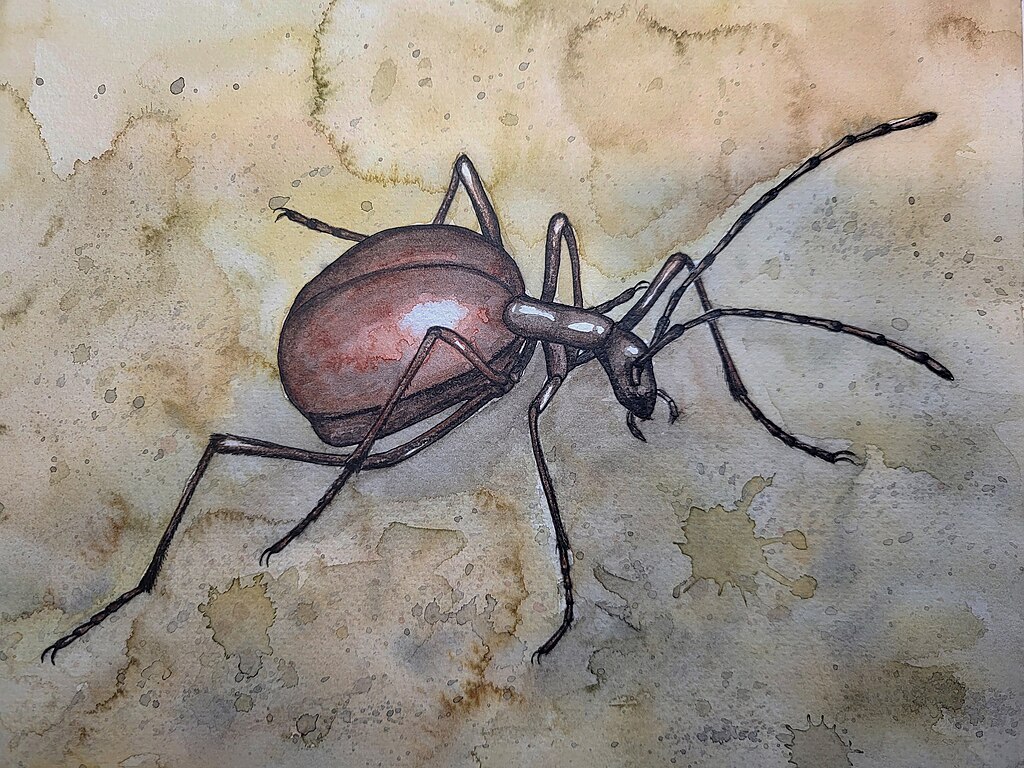
Cave beetles play a crucial role as decomposers in their underground ecosystems. They help break down organic matter that enters caves through various means – whether it’s leaf litter washed in by floods, dead animals that fall through cave openings, or waste products from other cave dwellers. This decomposition process is essential for nutrient cycling in these isolated environments. Without these industrious insects, caves would become choked with organic debris, and the delicate balance of cave ecosystems would collapse. They serve as both predators and scavengers, helping to maintain the health of their underground communities. Their feeding activities also help create nutrient-rich soil deposits that support other cave-dwelling organisms, making them keystone species in their ecosystems.
Survival Against All Odds
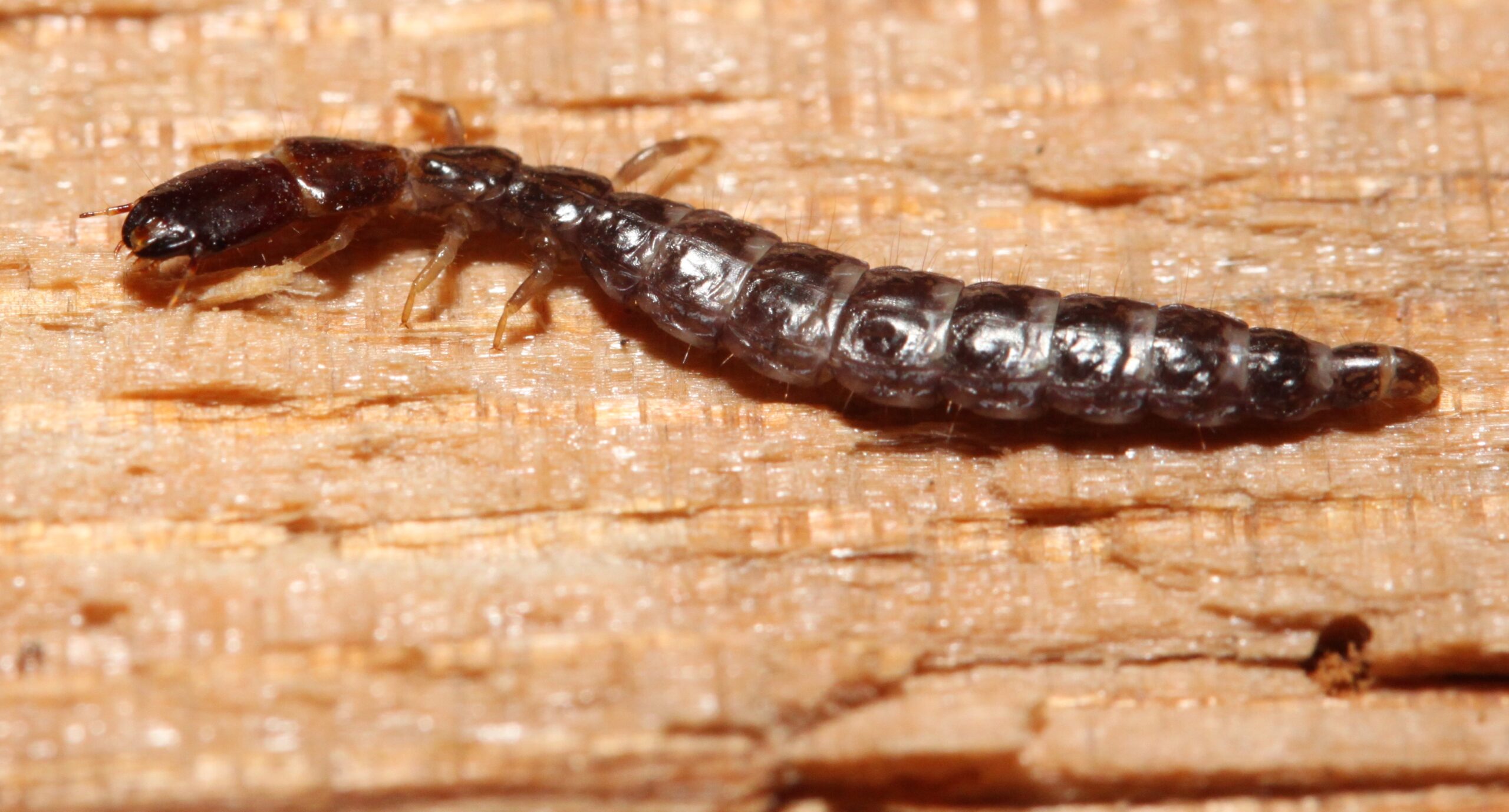
The survival strategies of cave beetles are nothing short of miraculous. They’ve developed incredibly efficient metabolisms that allow them to survive extended periods without food – some species can live for months without eating. This ability is crucial in cave environments where food sources can be unpredictable and widely scattered. Their exoskeletons have evolved to be exceptionally durable, protecting them from the rough surfaces and sharp edges common in cave environments. Many species have developed the ability to enter a state of reduced activity during particularly harsh periods, similar to hibernation, allowing them to conserve energy when resources are scarce. This combination of physical resilience and metabolic efficiency makes them remarkably well-suited to one of Earth’s most challenging environments.
Communication Through Chemistry
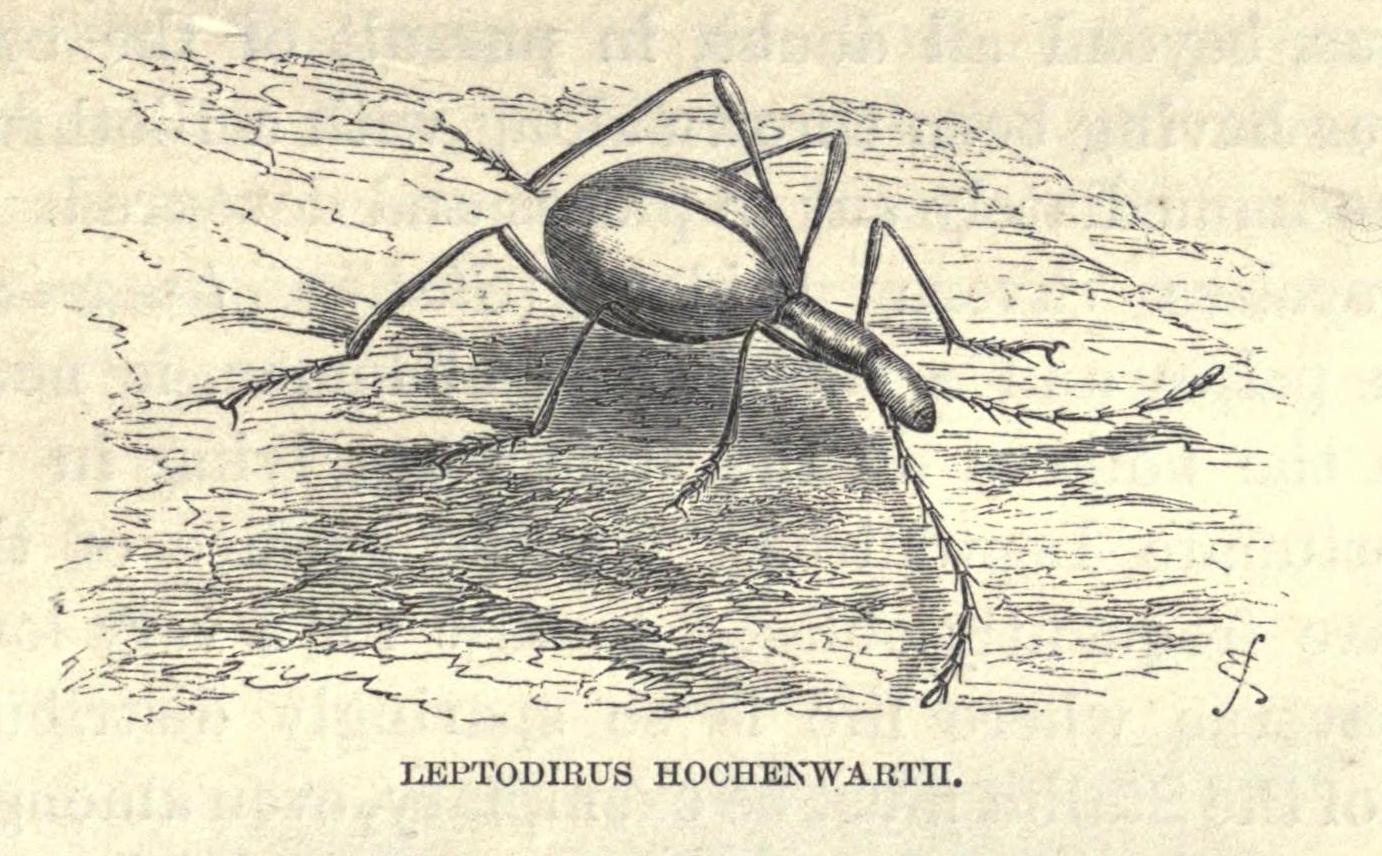
The chemical communication system of cave beetles is far more sophisticated than most people realize. These insects use a complex array of pheromones not just for mating, but for territorial marking, danger warnings, and even basic social coordination. Each species has developed its own unique chemical “language” that prevents confusion with other cave-dwelling insects. Some cave beetles can distinguish between dozens of different chemical signals, allowing them to gather detailed information about their environment and other individuals. They can determine the sex, age, reproductive status, and even recent feeding history of other beetles through chemical analysis alone. This creates a rich information network that helps coordinate the activities of the entire cave beetle community.
The Threat of Human Interference
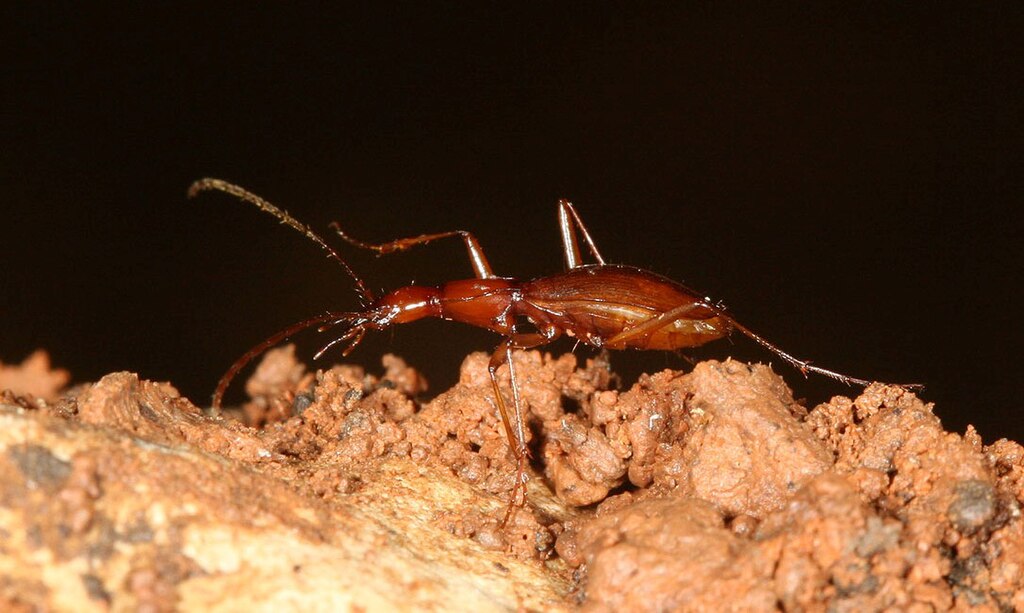
Despite their remarkable adaptations, cave beetles face significant threats from human activities. Cave systems are incredibly fragile environments, and even small changes in temperature, humidity, or air flow can have devastating effects on these specialized creatures. Urban development, mining operations, and groundwater pollution pose serious risks to cave ecosystems worldwide. Many cave beetle species have extremely limited ranges, sometimes existing in only a single cave system. This makes them particularly vulnerable to extinction if their habitat is disturbed or destroyed. Climate change is also affecting cave environments, as changing precipitation patterns and rising temperatures can alter the delicate conditions that these insects require for survival.
Scientific Research and Discovery
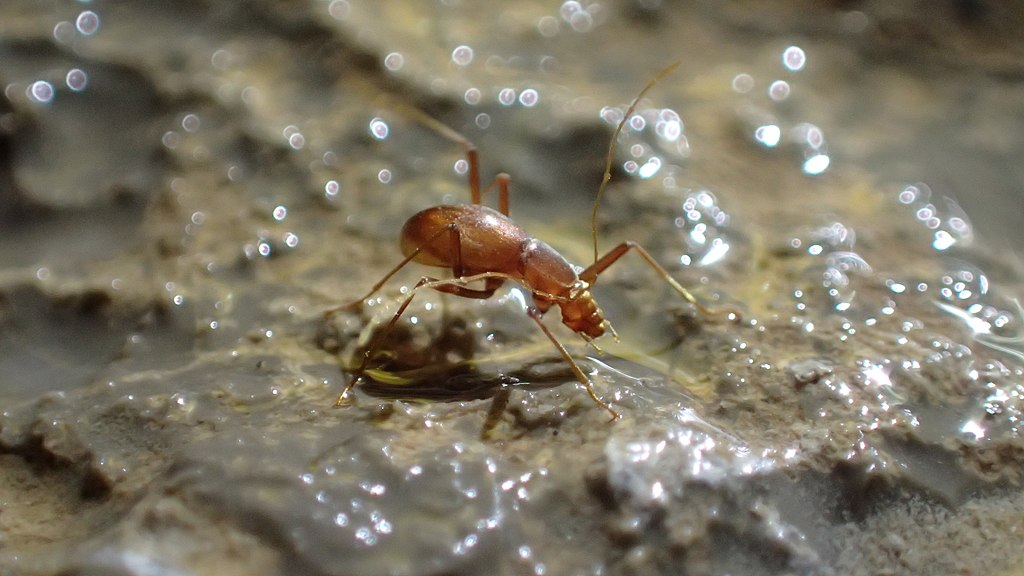
Cave beetles continue to fascinate researchers who study evolution, sensory biology, and extreme environment adaptation. Scientists have discovered that these insects possess unique proteins and enzymes that could have applications in biotechnology and medicine. Their ability to function in low-oxygen environments has provided insights into cellular respiration and metabolic efficiency. New species of cave beetles are still being discovered regularly, with remote cave systems yielding previously unknown insects that have been isolated for millions of years. Each discovery adds to our understanding of how life can adapt to extreme conditions and provides clues about the limits of biological adaptation. Some researchers believe that studying cave beetles could help us understand how life might survive in extreme environments on other planets.
Conservation Efforts
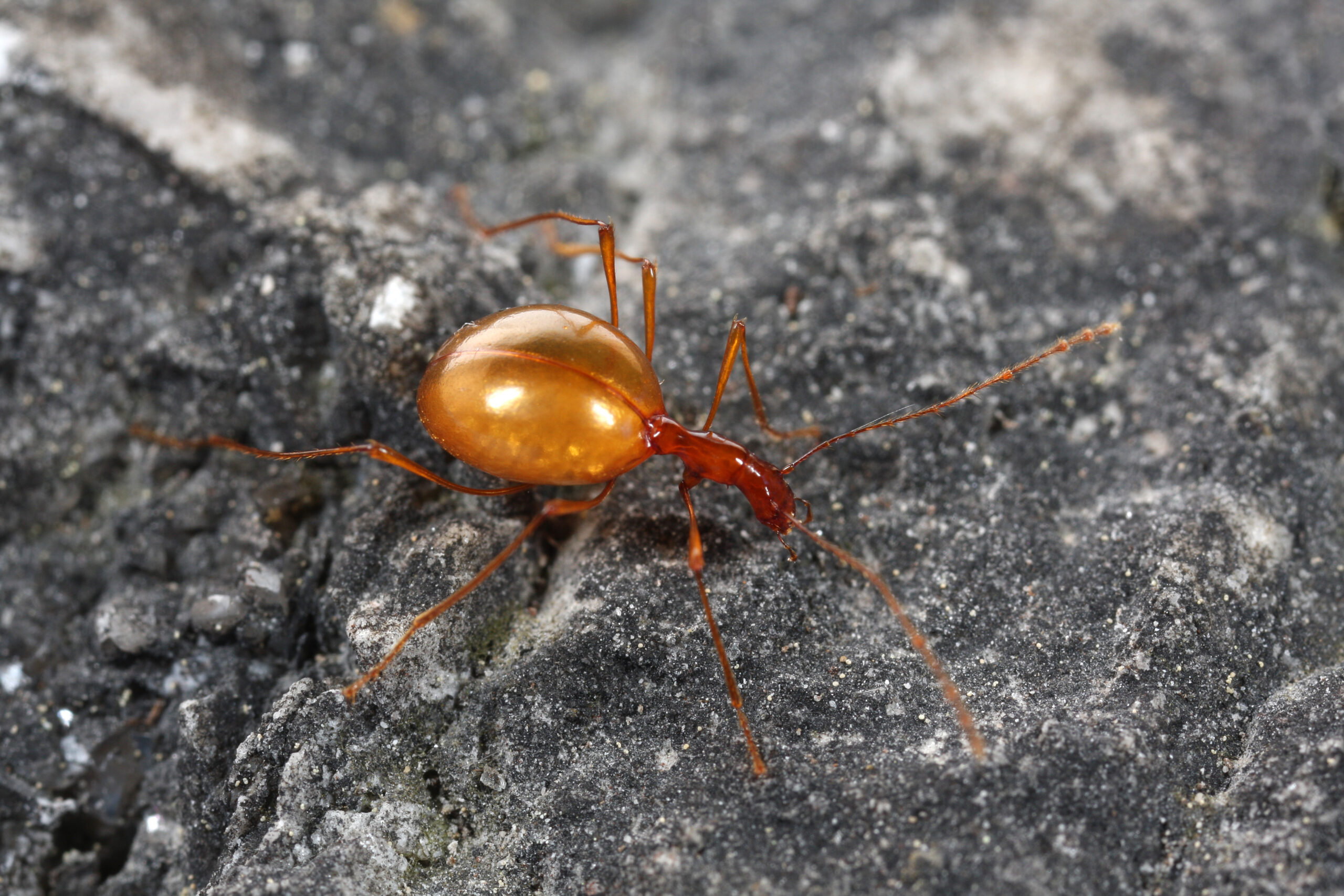
Protecting cave beetles and their habitats requires specialized conservation approaches that consider the unique challenges of underground ecosystems. Many countries have implemented strict regulations regarding cave access and modification, recognizing that these environments cannot be restored once they’re damaged. Cave conservationists work to monitor populations, restrict human access to sensitive areas, and educate the public about the importance of these hidden ecosystems. Some conservation programs focus on protecting entire cave systems rather than individual species, recognizing that the interconnected nature of cave ecosystems means that protecting one species requires preserving the entire community. These efforts have had some success, but the isolated nature of many cave beetle populations makes them particularly challenging to protect. International cooperation is essential, as many cave systems cross national boundaries and require coordinated conservation efforts.
Conclusion
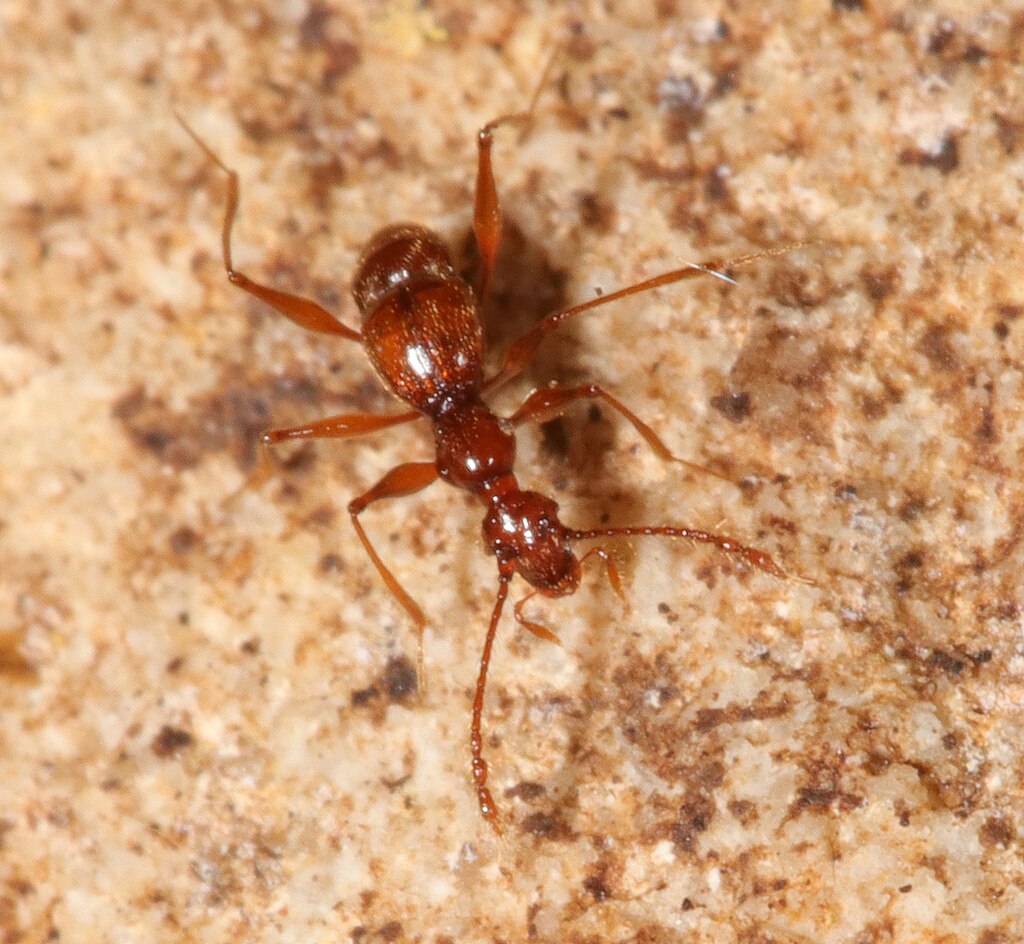
The remarkable story of cave beetles demonstrates that life finds ways to thrive in even the most extreme conditions on Earth. These eyeless insects have traded sight for enhanced sensory abilities, developing into perfectly adapted predators that rule their dark domains. Their evolutionary journey from surface dwellers to cave specialists showcases the incredible plasticity of life and the power of natural selection to create solutions to seemingly impossible challenges. As we continue to explore and study these fascinating creatures, we gain valuable insights into the limits of biological adaptation and the resilience of life itself. Perhaps most importantly, their existence reminds us that even in the darkest places on Earth, remarkable life stories are unfolding, waiting to be discovered and appreciated.

